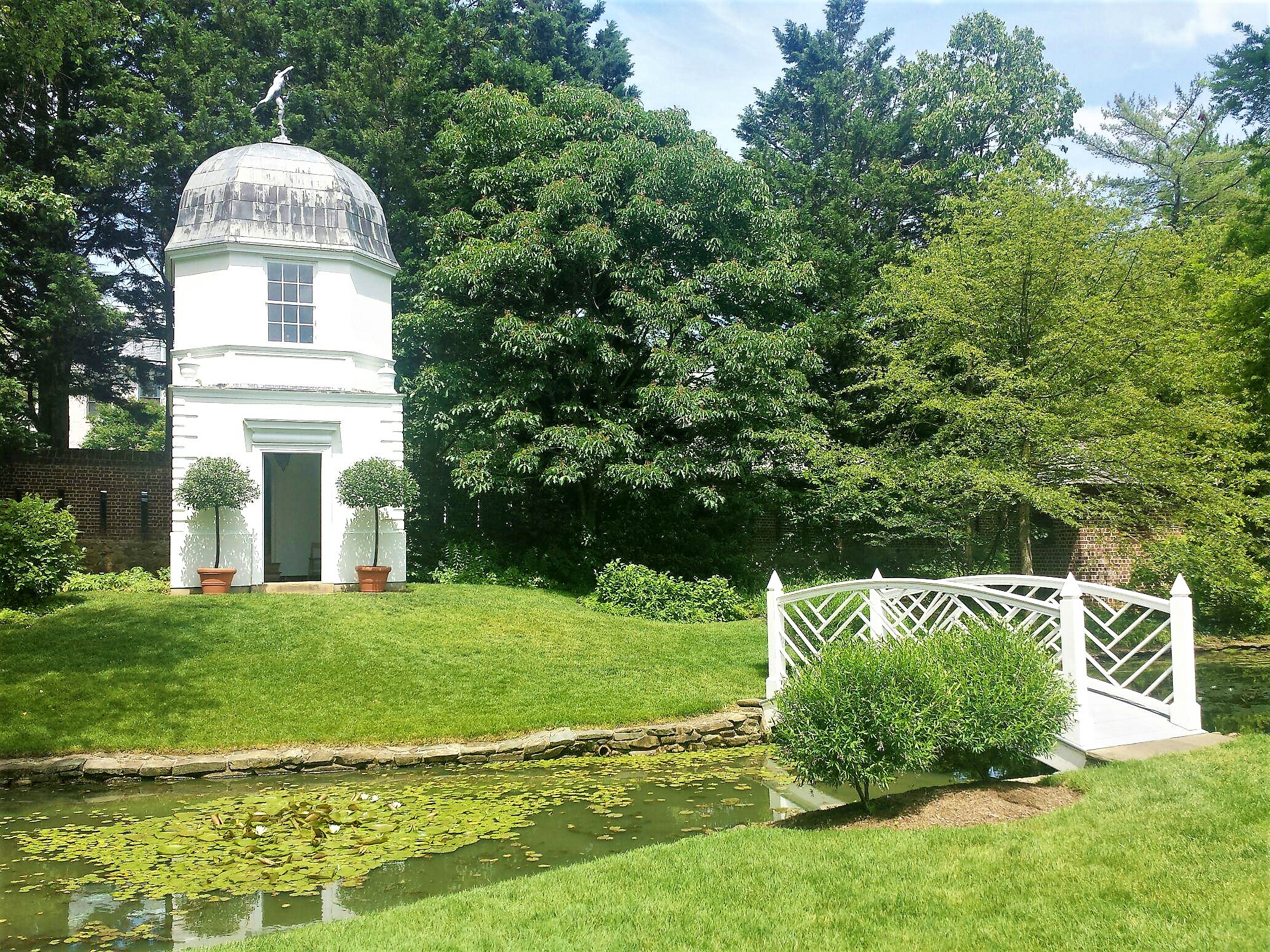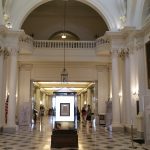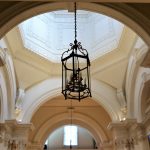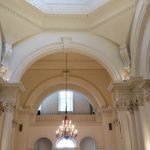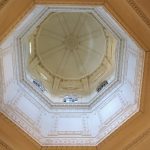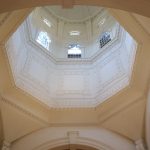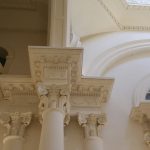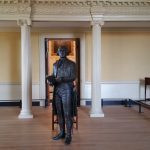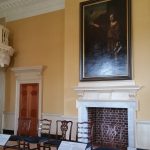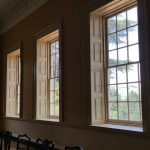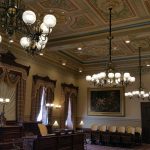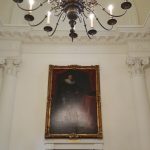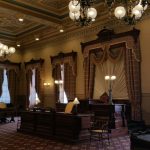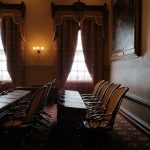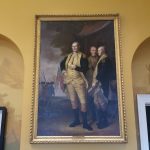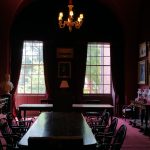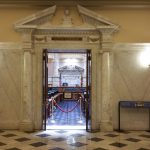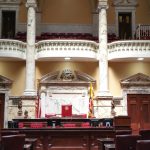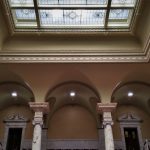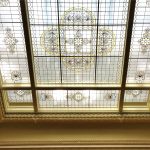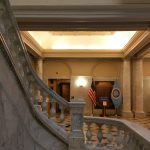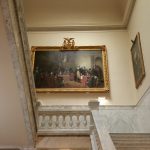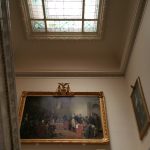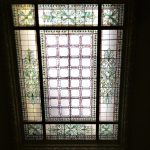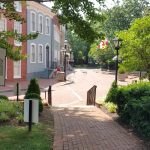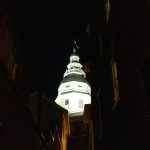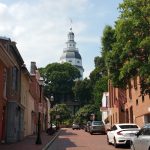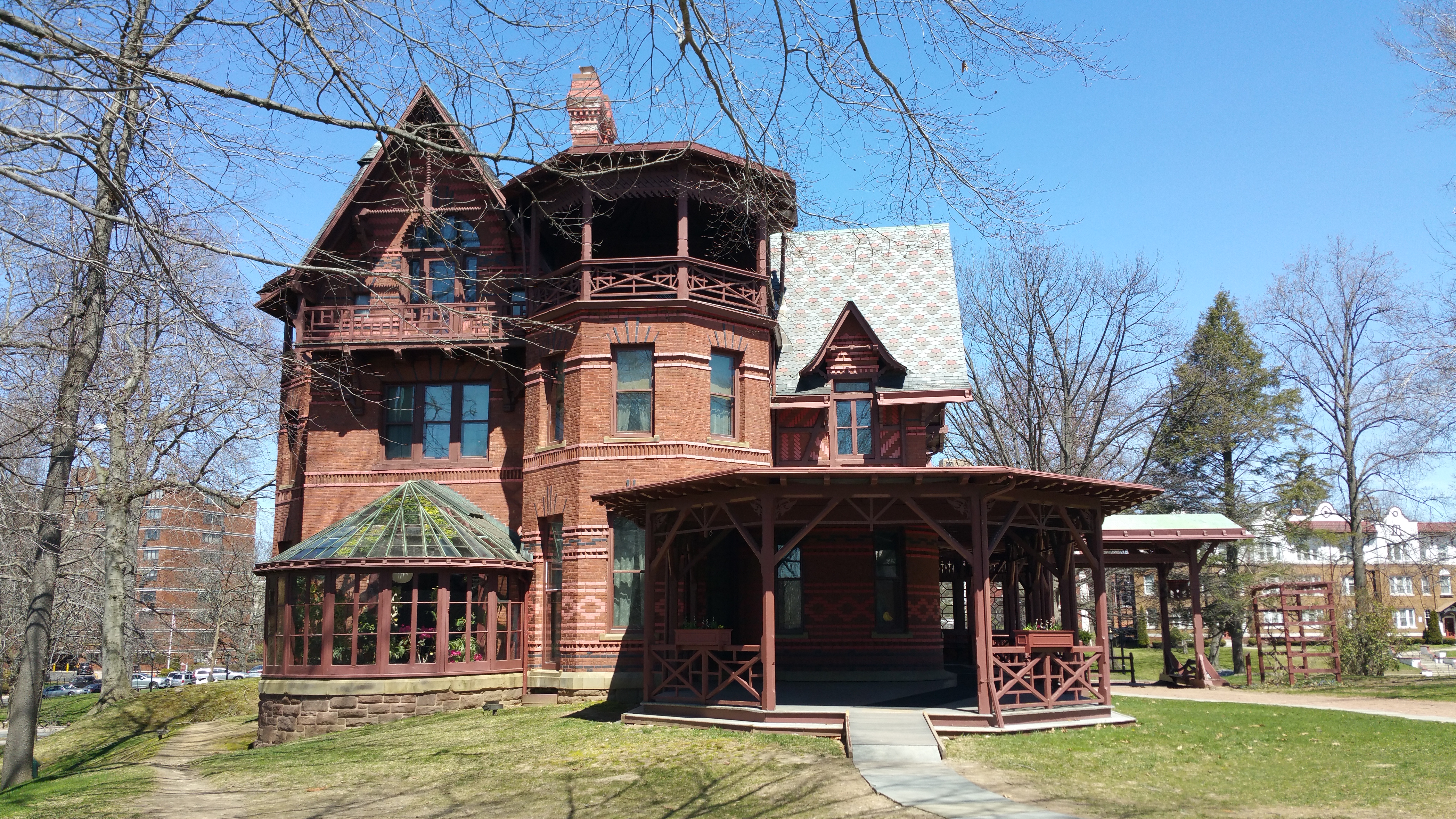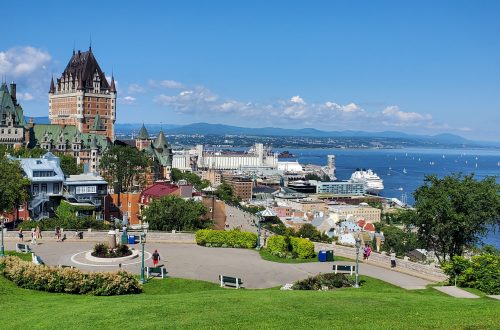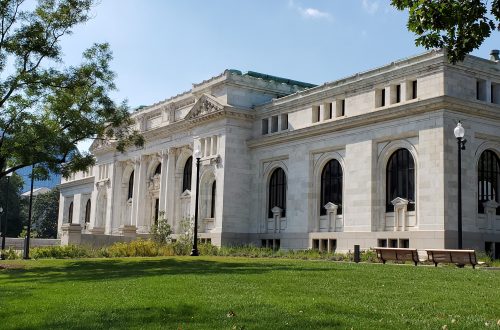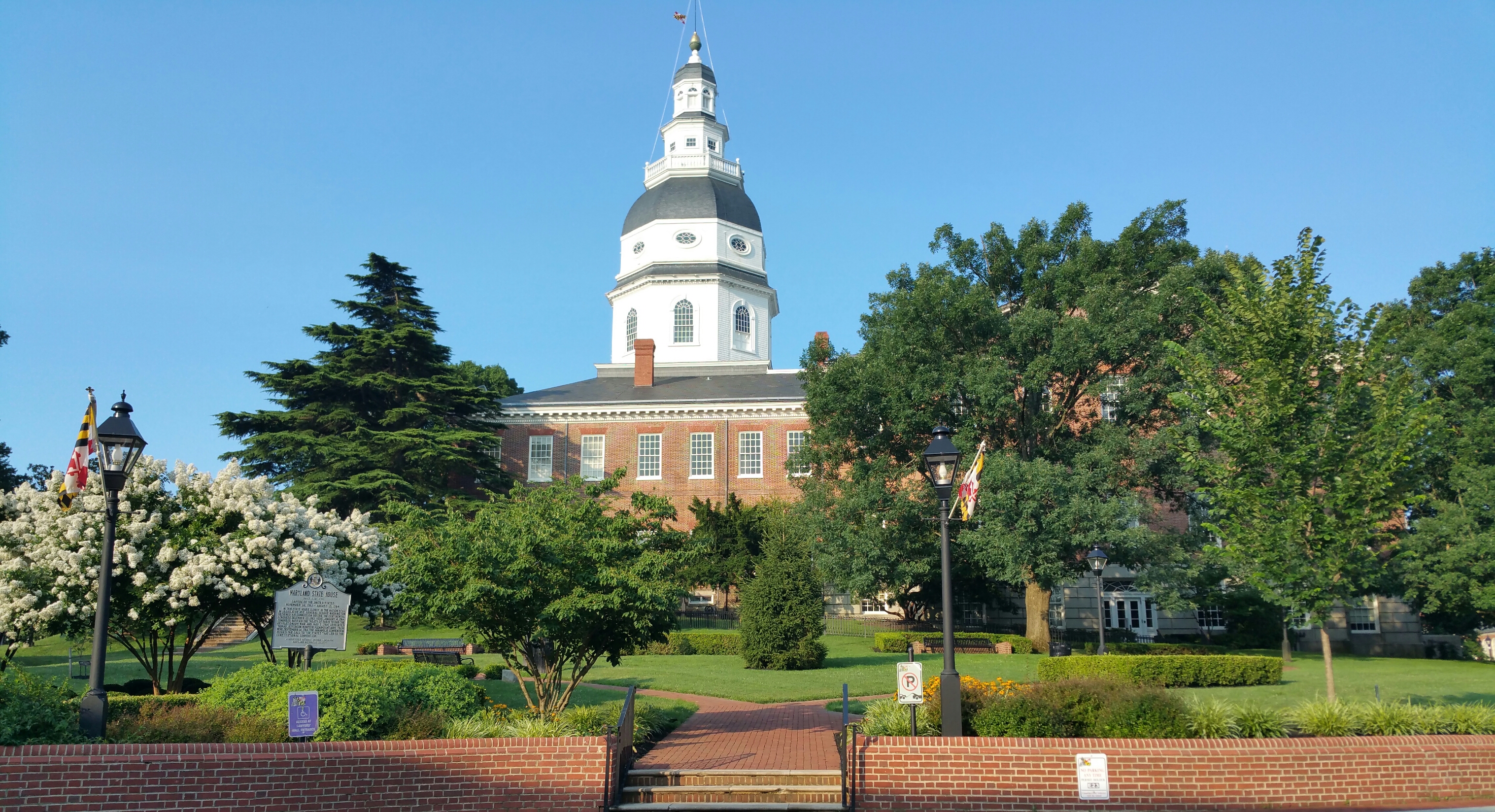
Maryland State House- Annapolis, MD
The Maryland State House is America’s oldest state capitol in continuous legislative use. In fact, the building is so old, it predates the Declaration of Independence; when construction started in 1772, the country was still under the rule of King George III. Following the Revolutionary War, the building served as America’s first peacetime Capitol. Wonderfully historic, and beautifully built, it is one of the most fascinating capitols in the United States.
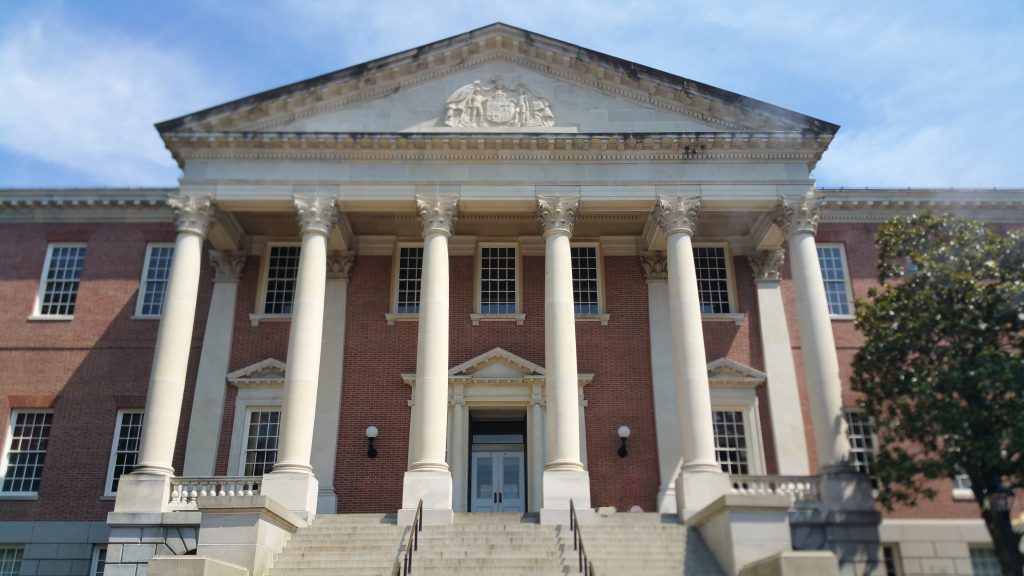
The stately Georgian brick building with a small pediment topped portico and large rectangular windows was designed by architect Joseph Horatio Anderson in 1772. Situated atop a hill on a circular piece of land, now known as State Circle, construction progressed slowly due to the Revolutionary War.
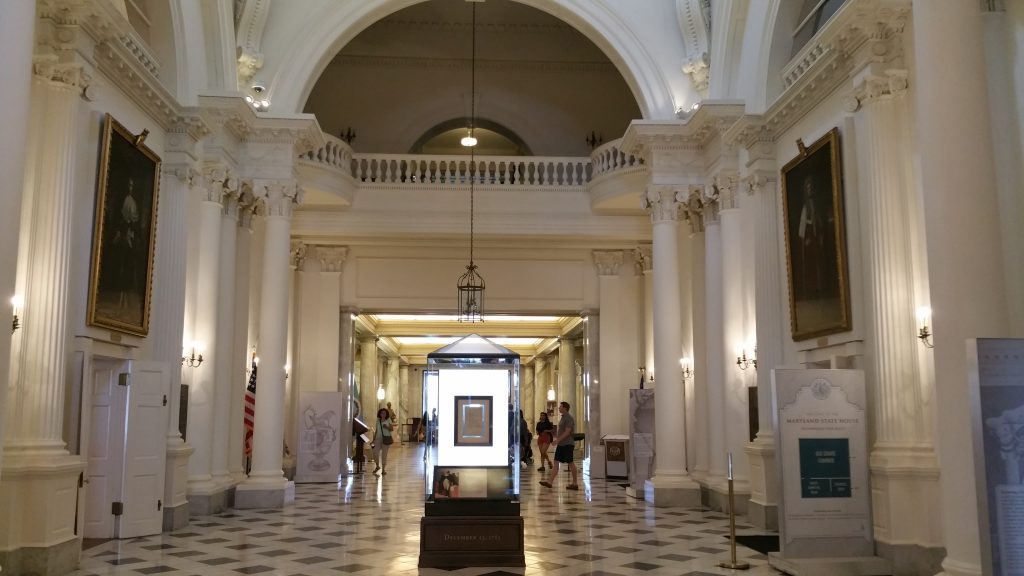
Finally completed in 1779, it temporarily become the United States Capitol on November 26, 1783. On December 23rd of the same year, in the Senate Chamber, George Washington resigned his commission as commander-in-chief of the Continental Army. Just a few weeks later, in the same room, the Treaty of Paris was ratified by Congress.
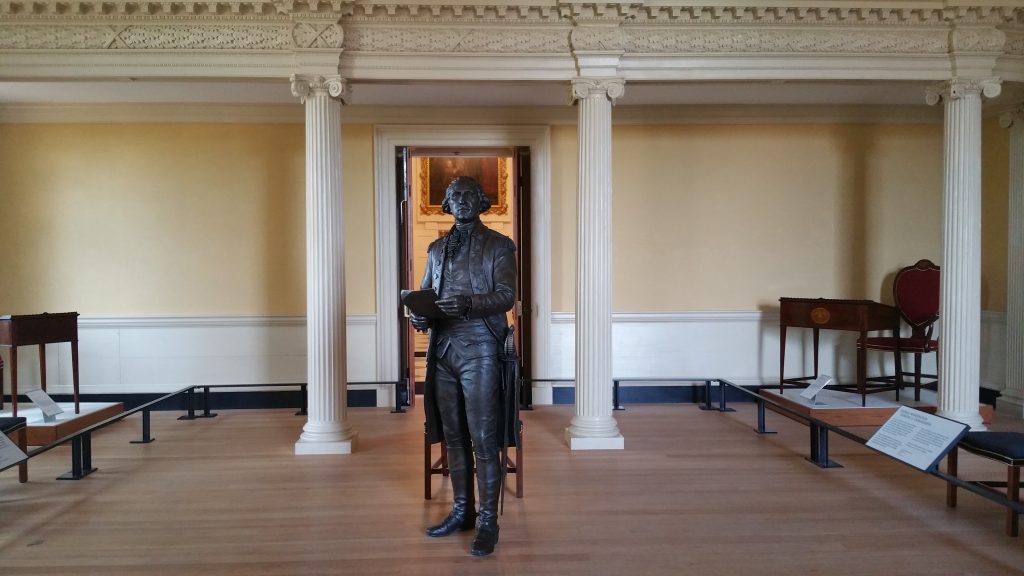
Anderson’s building consisted of Senate and House chambers, centered around an intricate rotunda. Although originally built with a copper dome, it proved to be inadequate; not only a leaky mess, it was deemed unsightly and antiquated by the architecturally astute Thomas Jefferson in 1766. In 1785, London trained architect Joseph Clark was retained to build a more architecturally pleasing and structurally sound dome.
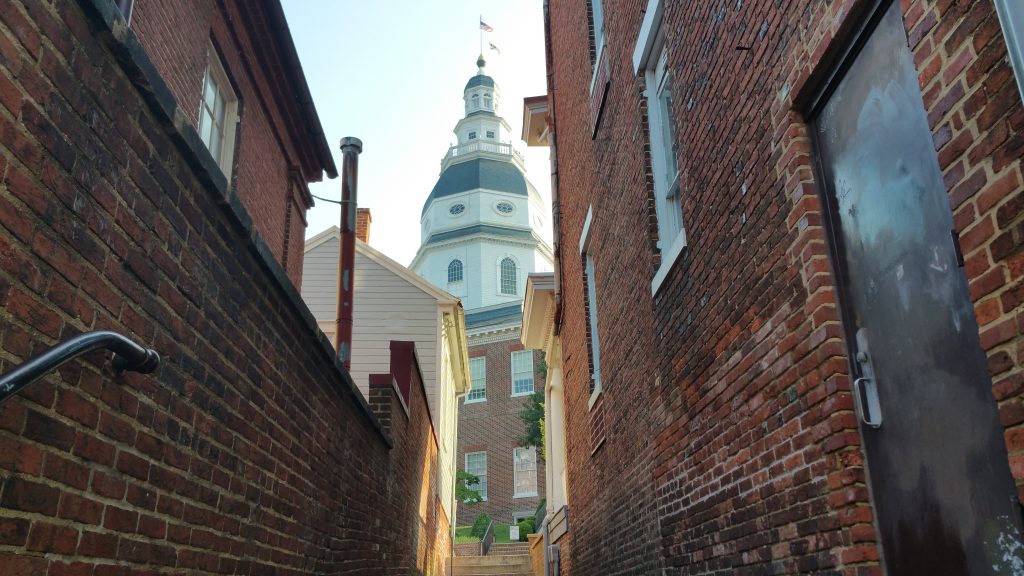
The result is absolutely magnificent. Built entirely without nails of cypress wood, at 181 feet it is the largest dome of its kind in North America. Outside, the dome sits atop an octagonal drum, topped with a balustraded balcony, another octagonal drum, and a lantern capped by a lightning rod designed by Benjamin Franklin. Inside, large Corinthian columns support arches, which brace the large wooden dome above. In 1790, Thomas Jefferson and James Madison climbed to the top of the new dome, and surveyed the surrounding city of Annapolis.
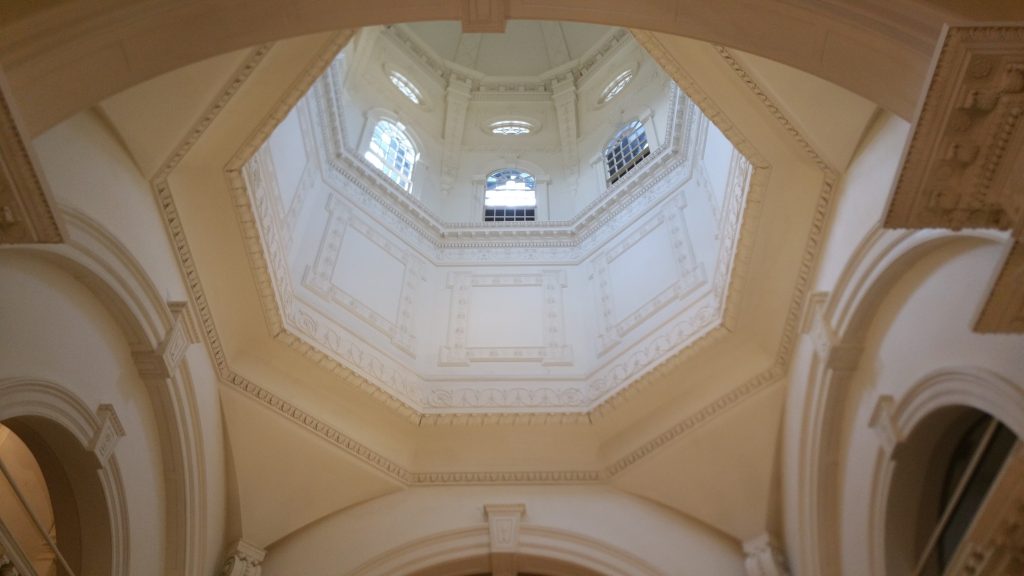
Despite several additions, by the turn of the century, more room was needed at the State House. As such, the Baltimore based architectural firm of Baldwin & Pennington was retained to construct an annex. Built between 1902-1905, the space contains the current Senate and House chambers, as well as the aptly named Grand Staircase, above which hangs Edwin White’s 1858 painting Washington Resigning His Commission.
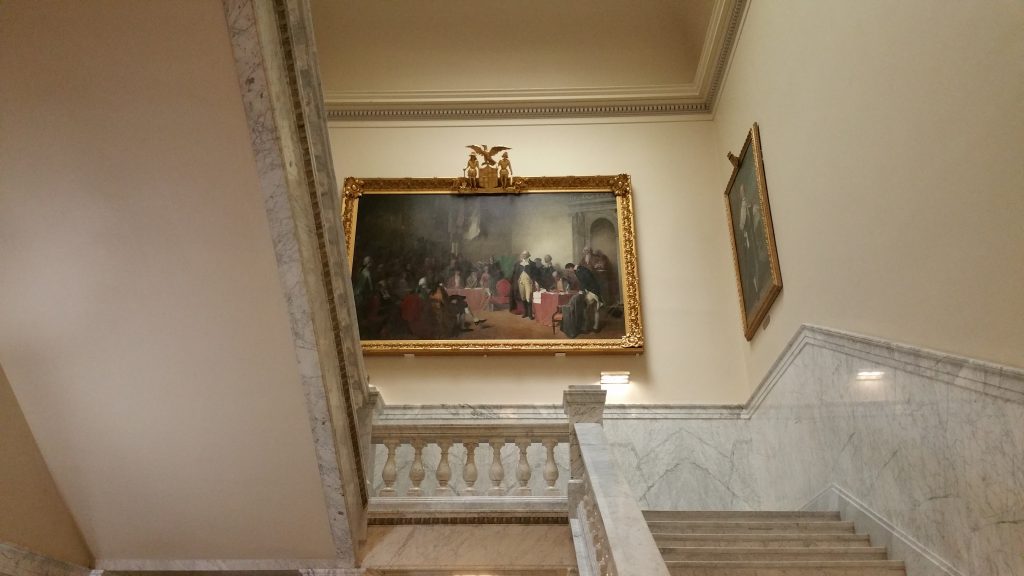
The new Senate chamber boasted walls, door surrounds, pediments, and Ionic columns of white marble, veined with black and gold, Maryland’s official colors. On the walls, portraits of Maryland’s four signers of the Declaration of Independence: William Paca, Thomas Stone, Samuel Chase, and Charles Carroll. Above, a large Tiffany Skylight, one of five added in 1904, brightens the room.
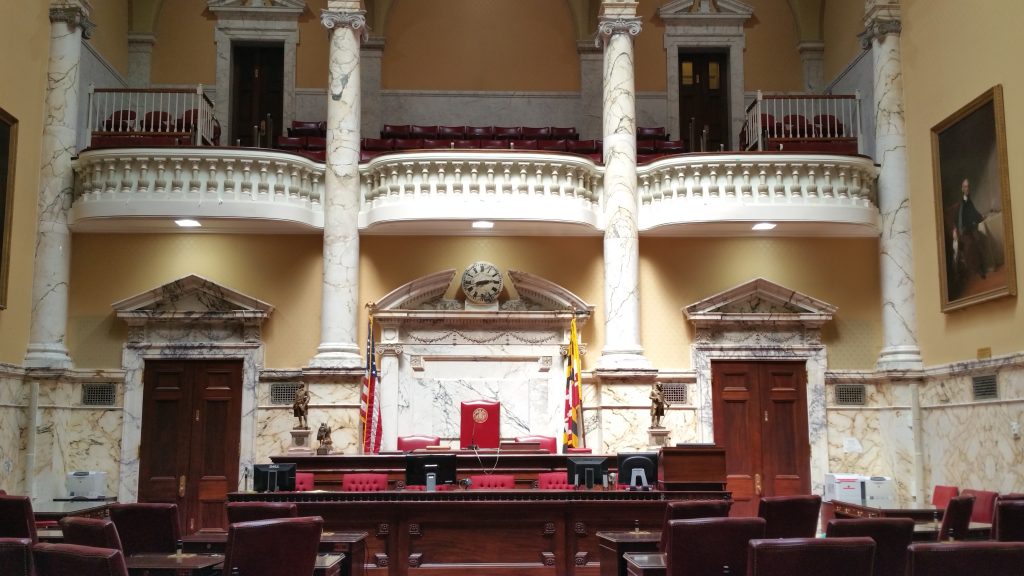
Stylistically similar, the larger House chamber contains portraits of former Speakers of the House, with the most recent to the right and left of the rostrum. Both spaces are still used by legislators between early January and mid-April. The second floor of the annex houses the official offices for the governor, lieutenant governor, speaker of the House and president of the Senate, as well as the Governor’s Reception Room.
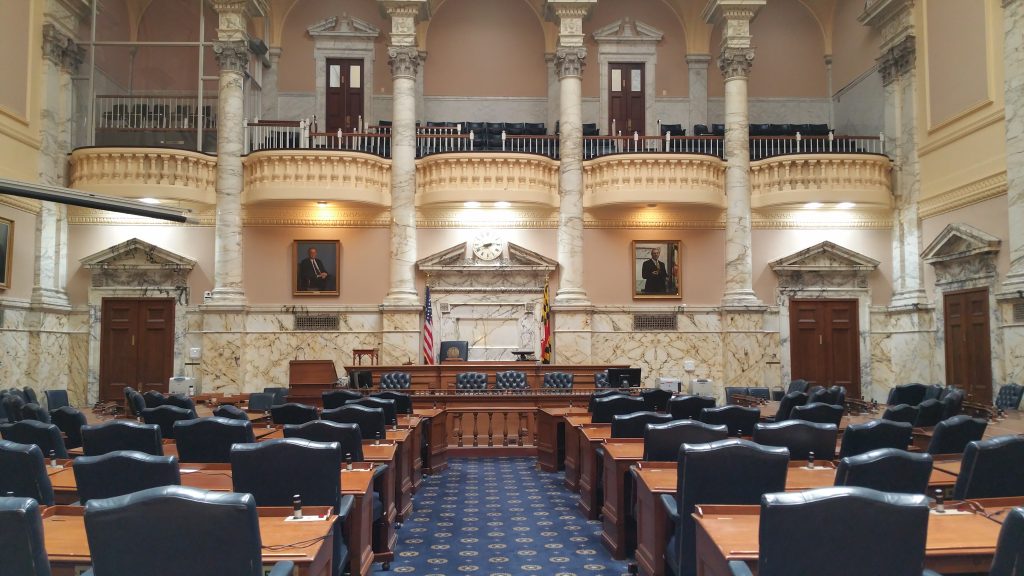
Throughout the State House, historical documents, portraits and artifacts are displayed. In the rotunda, six full length portraits of the Lords Baltimore, as well as Washington’s personal copy of his resignation speech. In the Senate Committee Room, Peale’s 1784 portrait Washington, Lafayette and Tilghman at Yorktown, depicting the American victory over the British at Yorktown.
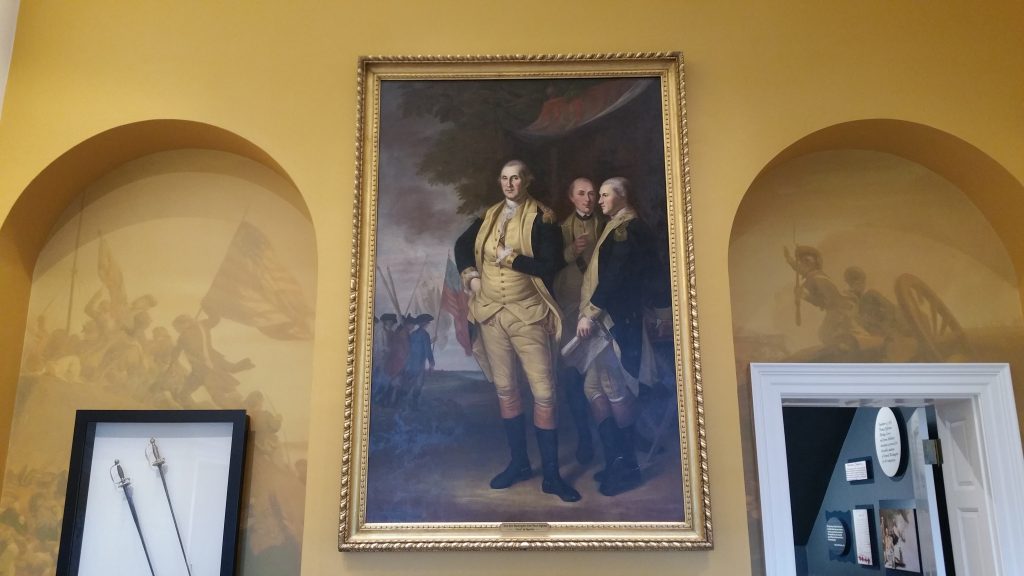
Both architecturally and historically, the Maryland State House is outstanding. Throughout the beautifully restored space, it is easy to glimpse the past, and relive the events that formed our nation.
